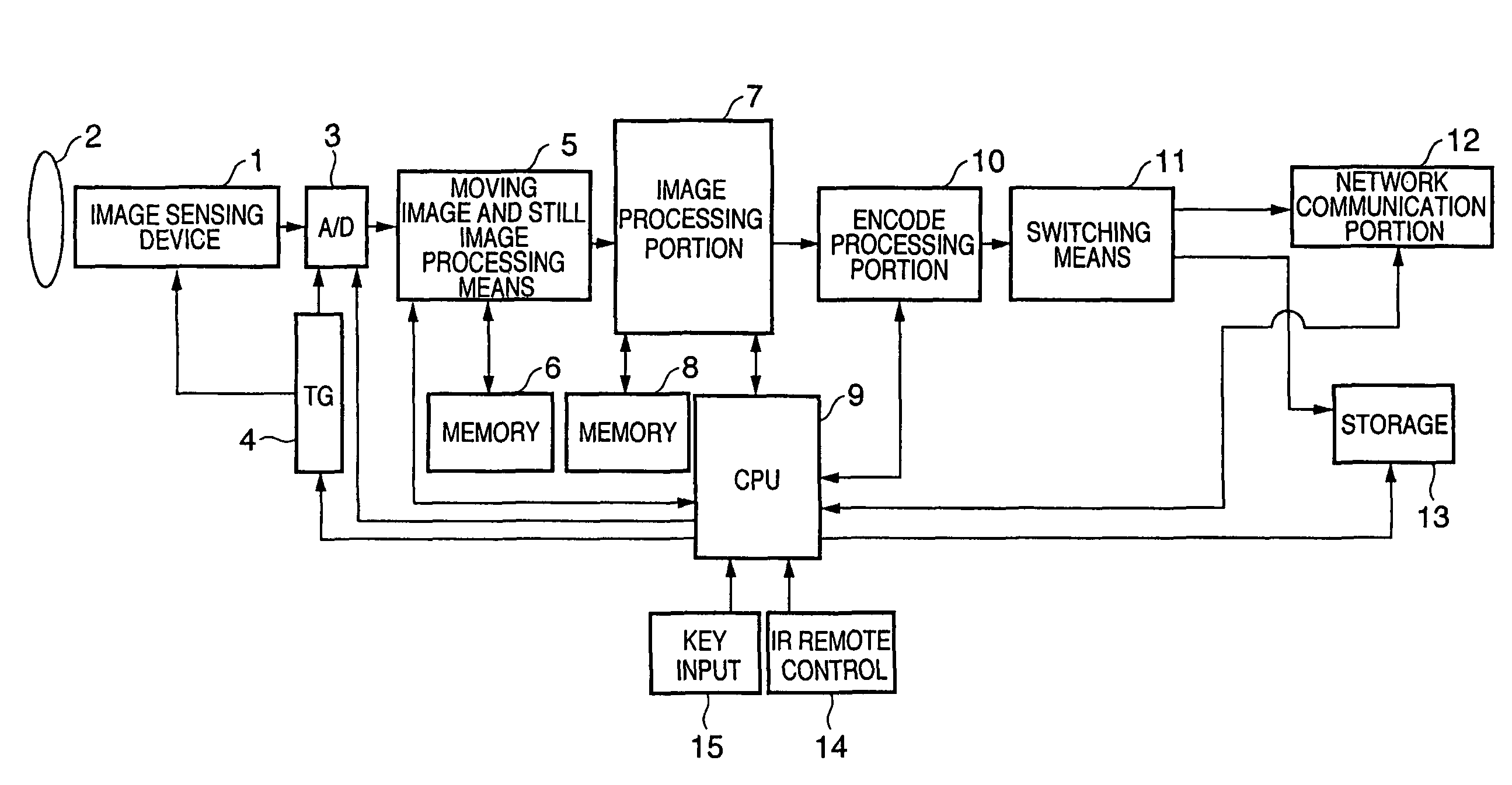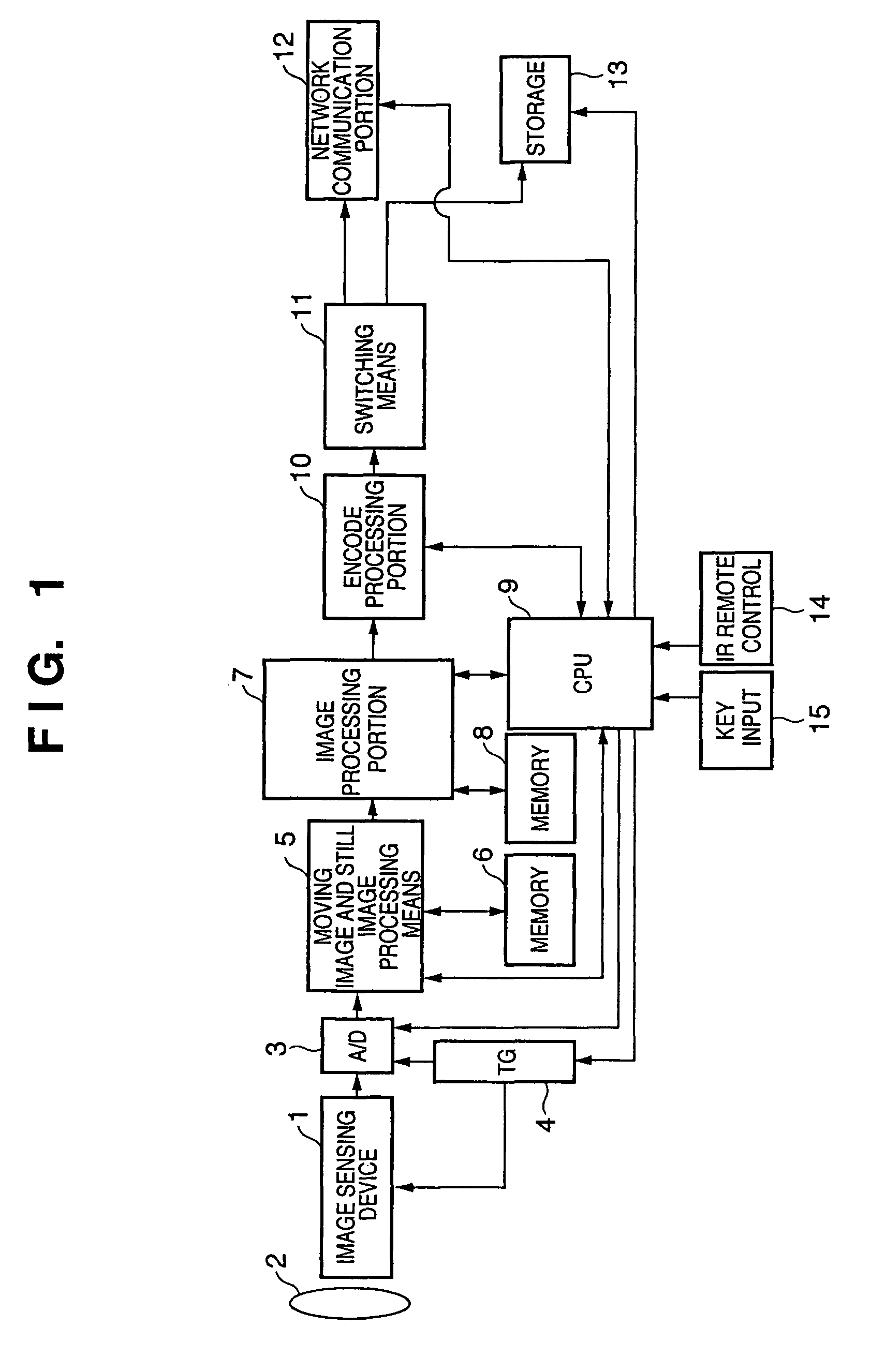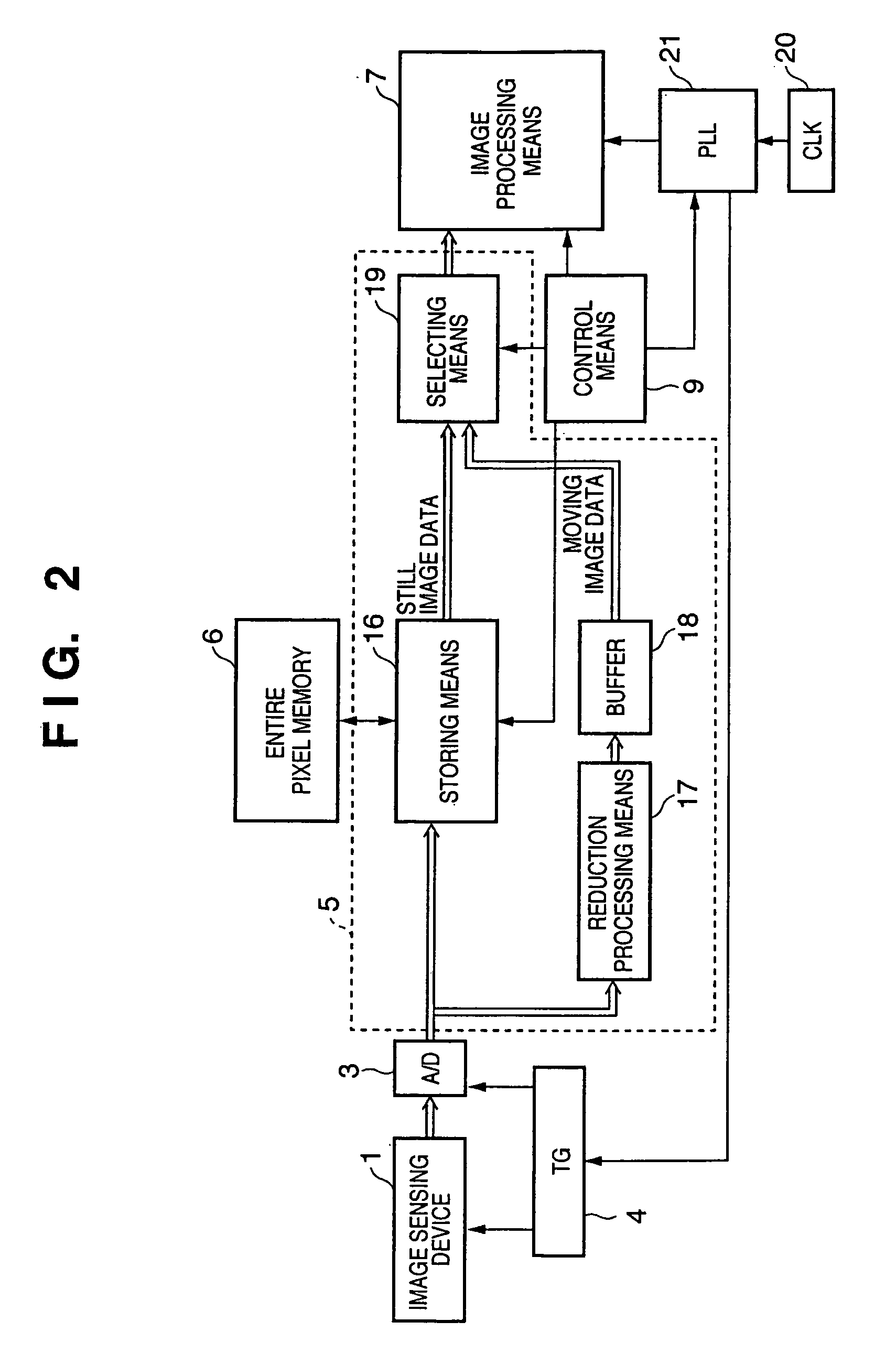Image sensing apparatus sensing moving and still images, method thereof, storage medium and computer program
a technology moving image, which is applied in the field of image sensing apparatus, a storage medium and a computer program, can solve the problems of power consumption, lsi chip area increase, and frame rate of moving image decrease, so as to achieve the effect of not lowering the frame rate of moving imag
- Summary
- Abstract
- Description
- Claims
- Application Information
AI Technical Summary
Benefits of technology
Problems solved by technology
Method used
Image
Examples
first embodiment
[0033]FIGS. 1 to 3 are diagrams representing the first embodiment of the present invention. FIG. 1 is a block diagram representing the entire overview of an image sensing apparatus of the present invention. FIG. 2 is a block diagram showing characteristics relating to the first embodiment of the present invention. FIG. 3 is a timing chart of various processes representing the characteristics of this embodiment.
[0034]In the configuration order of FIG. 1, reference numeral 1 indicates an image sensing device which is a photoelectric conversion element. Though not particularly limited as the image sensing device, it represents the image sensing device such as a CCD or a CMOS sensor, which is the image sensing device capable of reading out all the pixels within one frame period configuring a moving image as the first embodiment. Reference numeral 2 indicates a lens. Reference numeral 3 indicates an AD conversion portion in control of AD conversion for digital-converting analog imaging d...
second embodiment
[0068]FIGS. 1, 4 and 5 are diagrams representing a second embodiment of the present invention. A block diagram showing an image sensing apparatus of the second embodiment is the same configuration as that described in FIG. 1 of the first embodiment. FIG. 4 is a block diagram showing the characteristics relating to the second embodiment of the present invention. FIG. 5 is a timing chart representing the characteristics of this embodiment.
[0069]The configuration of FIG. 4 is a block diagram corresponding to reference numerals 1 to 21 of FIG. 2 described in the first embodiment, which is different therefrom in that the configuration does not have the buffer memory 18 described in FIG. 2. The structure surrounded by a dot line in FIG. 4 corresponds to the moving image and the still image processing means 5. The blocks of FIGS. 1 and 4 have the same functions and configurations as the blocks of FIGS. 1 and 2 described in the first embodiment, and so a description thereof will be omitted....
third embodiment
[0092]FIGS. 6, 7 and 8 are diagrams representing a third embodiment of the present invention. FIG. 6 is a block diagram showing an overview of this embodiment. FIG. 7 is a block diagram showing the characteristics relating to this embodiment. FIG. 8 is a timing chart of various processes representing the characteristics of this embodiment.
[0093]In FIG. 6, elements having the same functions as FIG. 1 are given the same numbers as those in FIG. 1. In FIG. 6, reference numeral 1 indicates an image sensing device which is a photoelectric conversion element. Though not particularly limited as the image sensing device, it represents an image sensing device, such as a CCD or a CMOS sensor, which is an image sensing device capable of reading out all the pixels within one frame period of a moving image according to this embodiment. Reference numeral 2 indicates a lens.
[0094]Reference numeral 3 indicates an AD conversion portion in control of AD conversion for digital-converting analog imagin...
PUM
 Login to View More
Login to View More Abstract
Description
Claims
Application Information
 Login to View More
Login to View More - R&D
- Intellectual Property
- Life Sciences
- Materials
- Tech Scout
- Unparalleled Data Quality
- Higher Quality Content
- 60% Fewer Hallucinations
Browse by: Latest US Patents, China's latest patents, Technical Efficacy Thesaurus, Application Domain, Technology Topic, Popular Technical Reports.
© 2025 PatSnap. All rights reserved.Legal|Privacy policy|Modern Slavery Act Transparency Statement|Sitemap|About US| Contact US: help@patsnap.com



